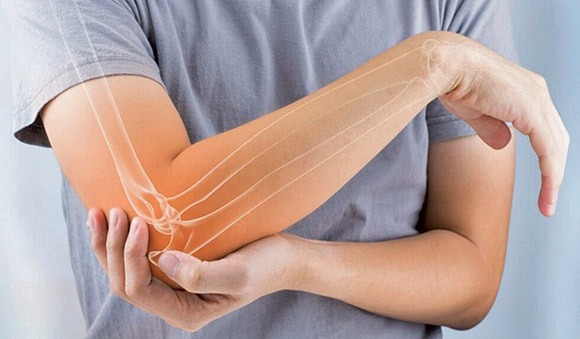Richard England, MD – Sports Medicine Fellow-Ortho Montana/AMP
One of the more common complaints among “weekend warriors” and those whose jobs require the repetitive use of their arms and hands is Lateral Epicondylitis, also known as Tennis Elbow. It has even been penned in song lyrics by the band Owl City. Despite its name it is more commonly seen in activities outside of tennis, partly because many other sports and overuse activities also cause the condition. The association with tennis has to do with the observation that the elbow is the most commonly injured joint among tennis players. This was shown in a recent survey among 529 recreational tennis players, and comprised approximately 20% of all injuries.
- The lifetime risk of elbow injury among club tennis players is 50% in those above the age of 30. The risk of elbow injury among tennis players increases with age, and is 2 to 4
- times more likely in those who play for more than 2 hours a day.
The incidence in recreational club tennis players could also be related to poor technique. Further highlighting the poor technique theory is an observation of over 700 elite tennis players (including those of older age) at the French open over a 3 year period where only one of the athletes reported tennis elbow like symptoms.
Typical symptoms of pain are felt over the lateral epicondyle which is the lateral protruding bone at the end of the humerus, or upper arm bone. It is the site of bony attachment of the tendon for the muscles that extend the wrist. Often patients will have pain with wrist extension, particularly if they have to extend their wrist against resistance such as lifting a heavy object. Repetitive use of the wrist extensors either through sports such as tennis, or through a job that requires the repetitive or constant contraction of the wrist extensors can cause and flare up symptoms. Think about the “back hand” in tennis. This motion involves wrist extension and contraction of the muscles that are on the back of the forearm. An example of a job that requires repetitive use of wrist extensors would be typing with the wrist extended for a prolonged period. Pain can range from annoying to debilitating.
It should be noted that there is also a condition called golfers elbow. It occurs on the opposite side of tennis elbow on the medial epicondyle, which is a medially protruding bone at the distal end of the humerus. It involves pain over the medial epicondyle which is the site of the bony attachment of the tendon for the muscles that flex the wrist. It is less common than tennis elbow. Activities that cause this pain are anything that causes stress on the wrist flexors up to their bony attachment on the elbow such as swinging a golf club, swinging a tennis racquet overhead, or an occupation which stresses this area.
Fortunately, there is Hope
- Modification
Initially the first thing that should be tried is activity modification. For instance if the patient is used to picking up items with the wrist in a palm down wrist-extended position, they should try and change this as much as possible to a palm up wrist flexed position. Creating an ergonomic environment at work for the muscles that extend the wrist should be a main focus. For those involved with sports such as tennis proper technique should be emphasized. - Brace
There is also a brace that is called a counter force brace that can be helpful. They are easy to use and are inexpensive. They are placed on the forearm approximately 6 to 10 centimeters below the elbow joint. - Anti-Inflamitories
Oral or topical anti-inflammatory medications (NSAIDS) if not contra-indicated can also be tried. - Physical-Therapy
If after six weeks initial management of tennis elbow has not been successful, a physician may recommend formal physical therapy if this has not already been done. Physical therapy may involve forearm stretching and strengthening with progression to eccentric strengthening of the wrist extensor muscles. - Injection
A doctor may also recommend an injection (plus or minus a steroid) into the area of pain in the lateral epicondyle. The injection can help especially with short term relief. It is imperative that the patient continues to practice activity modification and participate in physical therapy if prescribed to prevent recurrence. There are also a myriad of other proposed treatments for more chronic cases including:- platelet rich plasma injections (PRP)
- Ultrasound-guided percutaneous needle tenotomy
- acupuncture
- botox
- prolotherapy
- and topical glyceryl trinitrate application just to name a few.
Most patients ultimately get better with physical therapy and other conservative measures. In fact, even those left untreated usually get better. Symptom length typically lasts between 6 months and 2 years in those untreated. So a “wait and see” approach can sometimes be reasonable for those whose symptoms are tolerable. For those with more chronic, debilitating symptoms of more than 6 months a referral to orthopedics or sports medicine would be appropriate. Over 90% of patients with tennis elbow can be managed non-surgically. At Ortho Montana we offer conservative as well as surgical treatment for those who have failed conservative measures and in whom it is appropriate. In addition to offering physical therapy we also offer steroid injections as well as more advanced options such as platelet rich plasma therapy for the appropriate patient.
Spring is in the air, so get out there and play some tennis.








